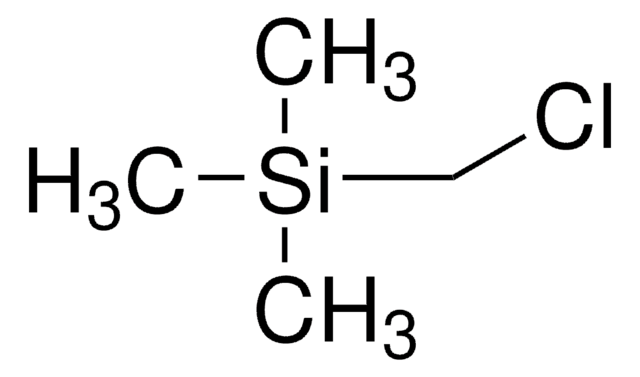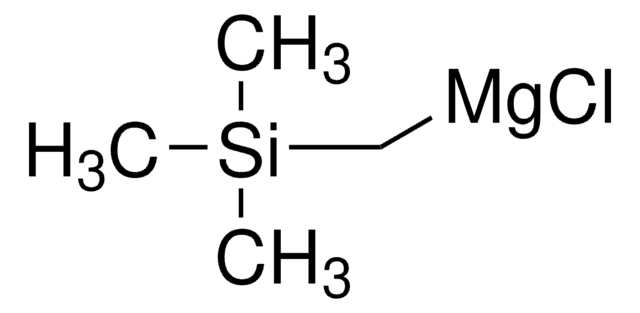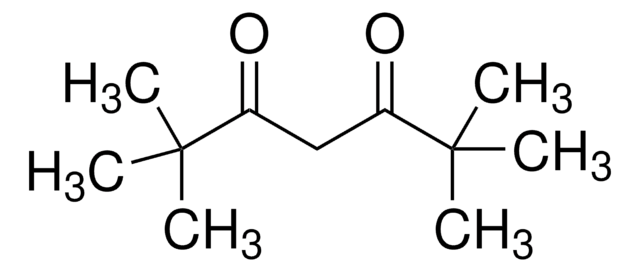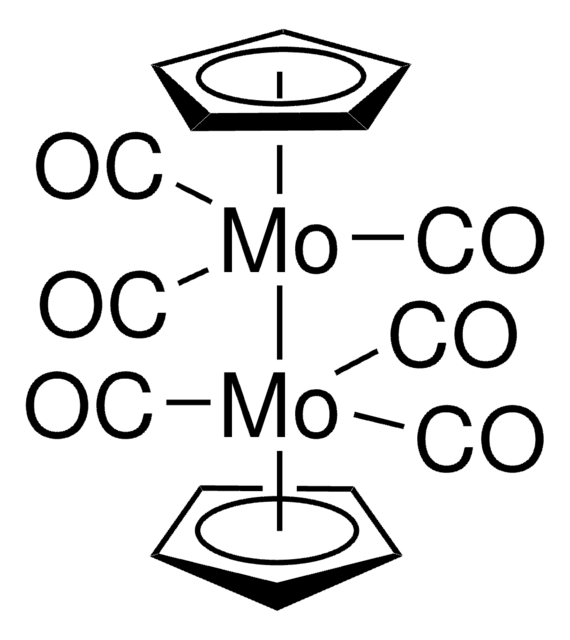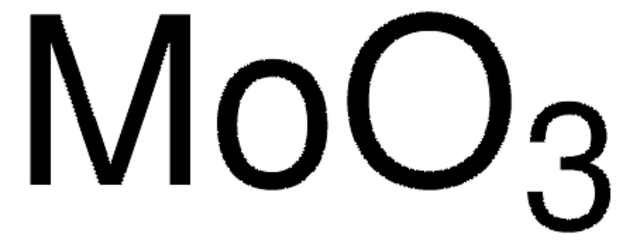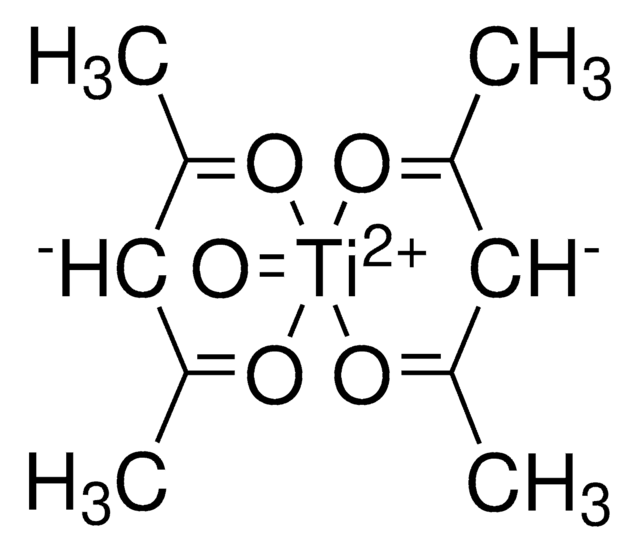227749
Bis(acetylacetonato)dioxomolybdenum(VI)
Synonyme(s) :
MoO2(acac)2, Molybdenum diacetylacetonate dioxide, Molybdenum dioxide bis(acetylacetonate), Molybdenum dioxydiacetylacetonate, Molybdenyl acetylacetonate
About This Item
Produits recommandés
Forme
powder
Niveau de qualité
Pertinence de la réaction
core: molybdenum
reagent type: catalyst
Pf
184 °C (dec.) (lit.)
Température de stockage
2-8°C
Chaîne SMILES
CC(=O)\C=C(\C)O[Mo](=O)(=O)O\C(C)=C/C(C)=O
InChI
1S/2C5H8O2.Mo.2O/c2*1-4(6)3-5(2)7;;;/h2*3,6H,1-2H3;;;/q;;+2;;/p-2/b2*4-3-;;;
Clé InChI
SKMUJBBRXZPAJY-VGKOASNMSA-L
Description générale
Application
- As a starting material to synthesize dioxomolybdenum(VI) Schiff base complexes, applicable as catalysts in the oxidation of alcohols using H2O2.
- To prepare graphene oxide supported heterogeneous molybdenum catalysts for epoxidation of olefins.
- As a catalyst in the etherification and thio-etherification reactions of thiols and alcohols.
Mention d'avertissement
Warning
Mentions de danger
Classification des risques
Acute Tox. 4 Dermal - Acute Tox. 4 Inhalation - Acute Tox. 4 Oral - Carc. 2 - Eye Irrit. 2 - Skin Irrit. 2 - STOT SE 3
Organes cibles
Respiratory system
Code de la classe de stockage
11 - Combustible Solids
Classe de danger pour l'eau (WGK)
WGK 3
Point d'éclair (°F)
Not applicable
Point d'éclair (°C)
Not applicable
Équipement de protection individuelle
dust mask type N95 (US), Eyeshields, Gloves
Faites votre choix parmi les versions les plus récentes :
Déjà en possession de ce produit ?
Retrouvez la documentation relative aux produits que vous avez récemment achetés dans la Bibliothèque de documents.
Les clients ont également consulté
Notre équipe de scientifiques dispose d'une expérience dans tous les secteurs de la recherche, notamment en sciences de la vie, science des matériaux, synthèse chimique, chromatographie, analyse et dans de nombreux autres domaines..
Contacter notre Service technique

